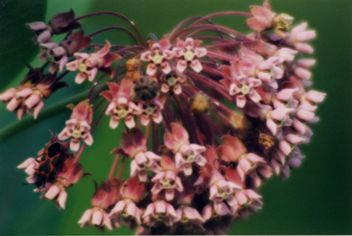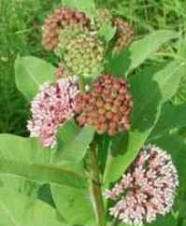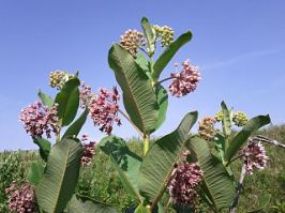Asclepias syriaca ~ Common Milkweed
Welcome to my website dedicated to Asclepias syriaca.
My name is Breanna and I am a student at the University of
Wisconsin-LaCrosse. I have created this page for my organismal
biology class in the spring of 2013. My colleagues have also
made their own web pages as part of our
Multiple
Organisms project at UW-LaCrosse. Please contact me with any
questions or comments at
baumann.brea@uwlax.edu. For more information about myself,
check out the contact me page.
http://plants.usda.gov/
On each page of my website, you will find interesting
information, fun facts, and beautiful pictures of the common
milkweed. I would recommend first visiting the
classification page to learn
the general information about where Asclepias syriaca fits on the big tree of life. Following that, you can visit the
habitat page to find out where
Asclepias syriaca lives. The
adaptation page is next, followed by
nutrition. The reproduction
page has a lot of interesting information about the several different
ways this species reproduces! The
interaction page tells you about what species need the milkweed
for survival, such as the monarch butterfly. Lastly, I
have included a
page where you will find many other facts
about the milkweed plant, including its possible use for paper
and its poisonous properties. I hope you learn a lot as you
navigate my website!
Asclepias syriaca is the most common species of
milkweed. It is a perennial herb. It resides primarily in the Midwest Region of the
United States, although it has a larger geographical and
ecological range than other milkweed species
(Klips et al,
2004). For a detailed description of the milkweed plant,
visit
www.missouriplants.com
For a quick reference about interactions, reproduction, and classification of Asclepias syriaca, follow this link http://www.fcps.edu/islandcreekes/ecology/common_milkweed.htm
Visit the classification page next to learn more about Asclepias syriaca.

 wikimedia
wikimedia